The Shark Will Find You, and That May Be Good for the Environment
Ampullae of Lorenzini Pores on the Snout of a Tiger Shark
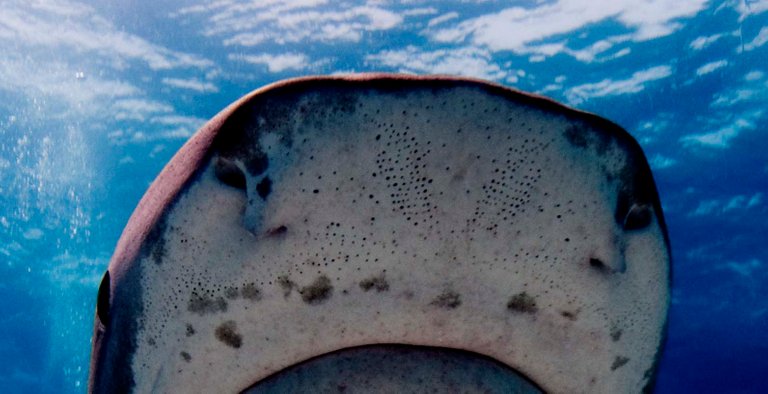
Credit: Albert Kok. CC license 1.0, 2.0, 2.5, 3.0
Most of us have heard that it's a bad idea to thrash in the water if sharks are around. It's a really bad idea to bleed in the water if a shark is nearby. But what if you are just swimming, and not bleeding? How will a shark find you? It seems that the deck is stacked in favor of the shark when it comes to finding prey in the water.
There are many species of sharks, so let's focus on the one pictured at the top of the page: the tiger shark. Not only does this shark have an excellent sense of smell, acute eyesight, and acute hearing, but it's also equipped with sensors that can detect electrical impulses emitted by muscles when its prey moves.
Tiger Shark
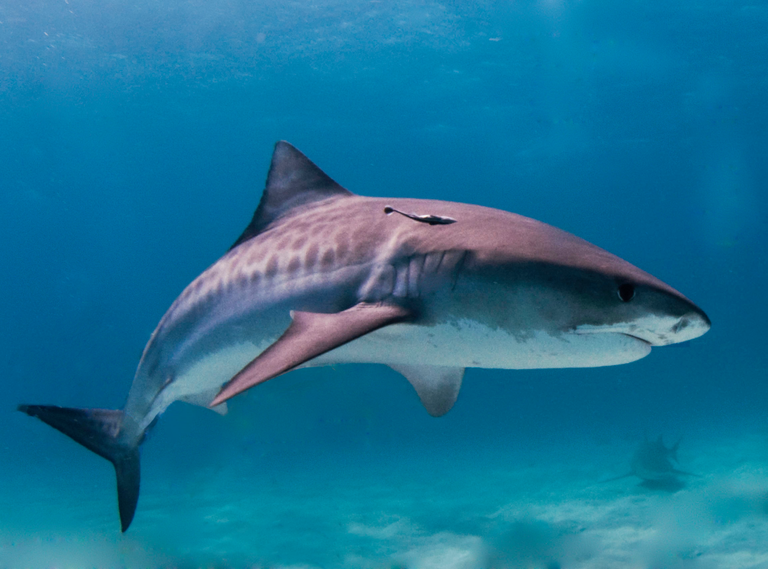
Credit: Albert Kok. Used under CC license, 1.2 or later
If you look at the picture that heads my blog, you will note tiny holes around the snout of the tiger shark. These are Ampullae of Lorenzini. They are filled with a jelly-like substance and serve as electroreceptors. Not only can these receptors receive impulses that are sent to the shark's brain when it is pursuing prey, but the electrical signals also help the shark to navigate.
It is believed that the Ampullae of Lorenzini can 'read' signals from the earth's electromagnetic field. A study published in the periodical Current Biography asserts that "...sharks... can travel 20,000 kilometers (12,427 miles) and end up in the same spot...”because of the signals received by the Ampullae of Lorenzini.
Ampullae of Lorenzini,Three-dimensional View
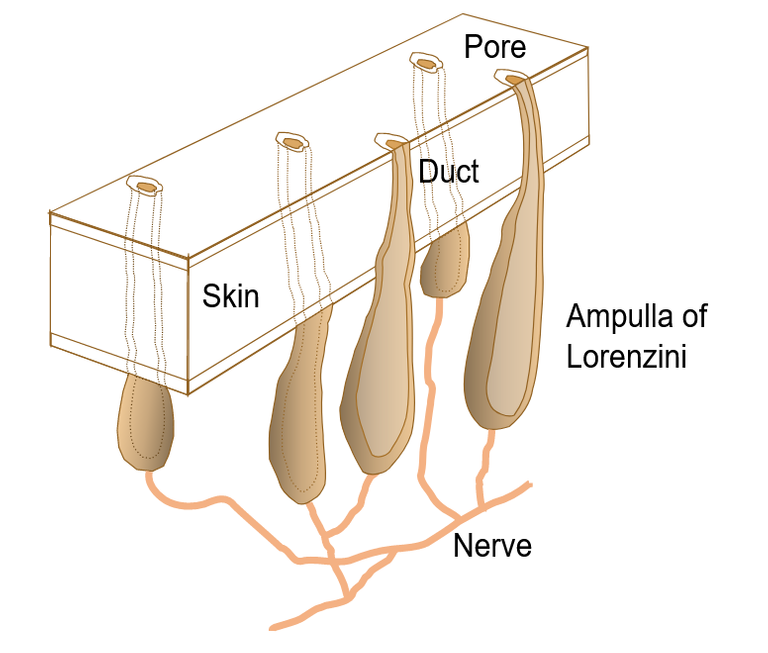
Credit: Chiswick Chap. Used under CC 4.0 license

What substance is in the Ampullae of Lorenzini that conducts the electrical impulses? The substance is a jelly-like mucus that contains a compound, keratan sulfate. Keratan sulfate has conductive properties that are almost as strong as those found in a synthetic polymer widely used in industry, Nafion.
Keratan sulfate's high rate of conductivity may be really good news for the environment. Nafion, which keratan sulfate could conceivably replace, inflicts long-term environmental harm. It has been shown to produce PFC's (perfluorinated compounds) upon exposure to high temperatures and subsequent decomposition. The high temperatures include those that may be reached during incineration.
A study described in the journal Nature reports on the environmental impact of Nafion: "The results of this study indicate that Nafion is a potential environmental source of PFCs, which have attracted growing interest and concern in recent years."
Fuel Cell: Common Use for Nafion
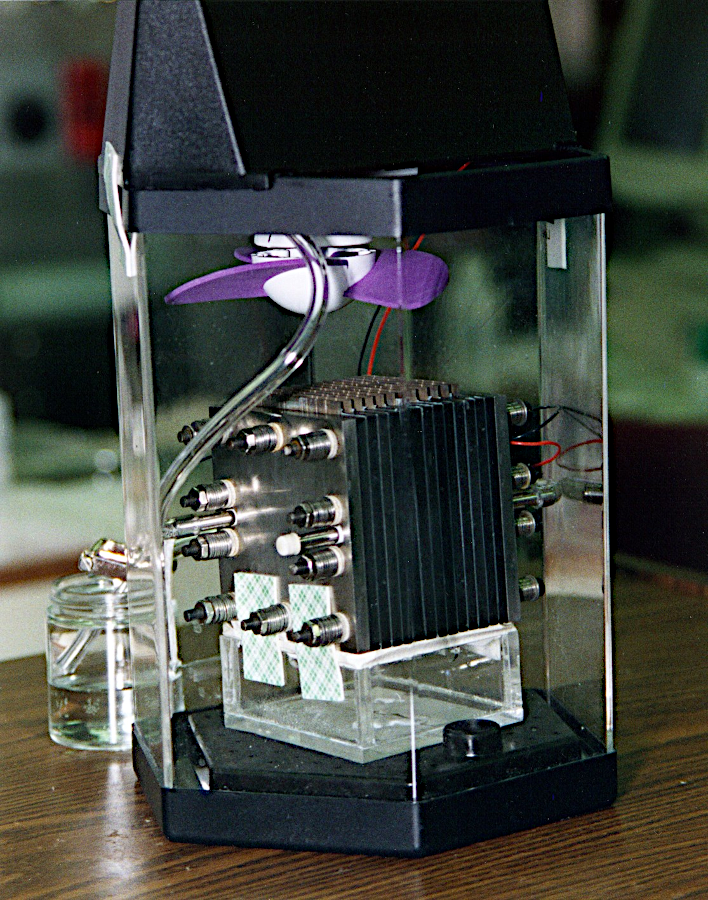
Credit: NASA Public domain.
Why do We Care About PFCs?
It's hard to find a firm and fast statement by a government agency about the health effects caused by exposure to PFCs. However, in 2009 the US EPA managed to issue this rather elliptical statement:
Long-chain perfluorinated chemicals (PFCs) are found world-wide in the environment,wildlife, and humans. They are bioaccumulative in wildlife and humans, and are persistent in the environment. To date, significant adverse effects have not been found in the general human population; however, significant adverse effects have been identified in laboratory animals and wildlife. Given the long half-life of these chemicals in humans (years), it can reasonably be anticipated that continued exposure could increase body burdens to levels that would result in adverse outcomes.
Research Biologist Drawing Blood From Turtle to Check for PFCs

Credit: National Institute of Standards and Technology. Biologist Jennifer M. Keller. Public Domain
When it comes to the environment, and not health, information about PFCs is less ambiguous. According to a report published on the CNBC website, the US EPA has established that PFCs "... are among the most potent and longest-lasting greenhouse gases on the planet..."
Perfluoroalkanes
The results of a 2020 study published in the Journal of Applied Polymer Science describes another biproduct of Nafion degradation: perfluoroalkanes, PFAs. This study found, as is true of PFCs, that this chemical is released at temperatures, "above 400°C".
A subset of PFAs, PFAA, particularly PFOA and PFOS, are the most well studied PFAS.. This subset of chemicals, indeed all PFAs, are quickly absorbed and accumulate in the body. Here is a quote from the journal Environmental Science and Technology Letters:
After absorption, they distribute from blood to organs and tissues that receive high blood flow, such as the liver, kidney, lung, heart, skin, testis, brain, bone, and spleen. 46,66−70 Because PFAA can occupy sites on multiple receptors, proteins, and cell interfaces in the body, they can produce physiological effects across a range of tissues.
Biomagnification: the Further Up the Food Chain, the More Concentrated the PFAs
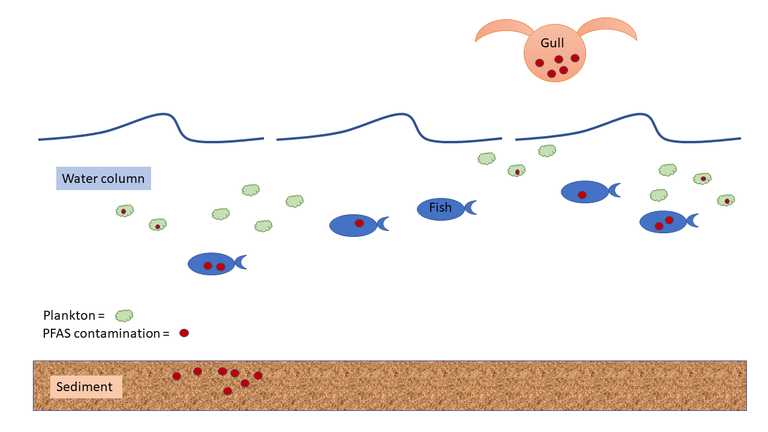
Credit: Yanishevsky. Used under CC 4.0 license
The high rate of electrical conductivity in Ampullae of Lorenzini has been explored for potential application in the field of bioelectronics. Fuel cells specifically have been mentioned. Instead of using Nafion, it has been proposed that one could use material found in the Ampullae jelly. Here is an excerpt from the journal Neural Regeneration Research: "The ampullae electrosensory gel has conductive properties rivalling the Nafion electrocytes of fuel cells and is the most sensitive proton gradient detection system known in nature..."
Imagine replacing Nafion with natural, biodegradable material. This is potentially the promise contained in research on Ampullae of Lorenzini conductivity.
Simply put, the promise of bioelectronics is the "convergence of biology and electronics". This convergence would have utility not only in industry, but also in medicine.

Mammalian Corneas Are Rich in Keratan Sulfate

Credit:@yaziris, LMAC Image Library Keratan Sulfate has a role in mammalian tissue as a neurotransmitter.

Electronic devices have already been integrated into routine medical practice. The frontier for development of this technology is wide open. The University of Chicago's Center for Entrepreneurship and Innovation, for example, describes development of Stretchable, Self-Powered Bioelectronics (that) Mimic Skin in Form and Function. The university's website explains that researchers are "Drawing on innovation in the fields of semiconductor physics, solid mechanics, and energy sciences..."
Manta Ray Use Ampullae of Lorenzini
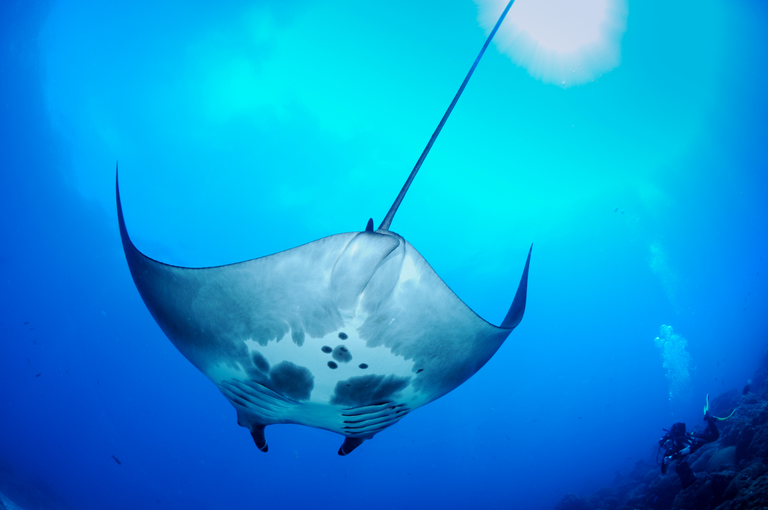
Credit: G.P. Schmahl, NOAA. Public domain. That manta ray (unlike the stingray) does not hunt prey with its electrical signalling ability. It instead avoids being eaten by sharks by detecting these predators in the water.
When exploring the highly conductive properties of the Ampullae, researchers at the University of Santa Cruz consider how this relates to the development of "biomaterials". The materials might be used to treat a variety of conditions. For example, there is potential for development of a "bioprotonic device that could...be used therapeutically in epilepsy or other disorders".
Conclusion
My interest in Ampullae of Lorenzini began when my granddaughter mentioned them to me. I'd never heard of this before and started reading. A door opened. Not only do sharks use this electronic signalling, but so do many marine animals. While many marine animals have electric signalling, almost all "land vertebrates are not known" to have it
Platypus, Rare Instance of Terrestrial Animal With Electrical Signalling
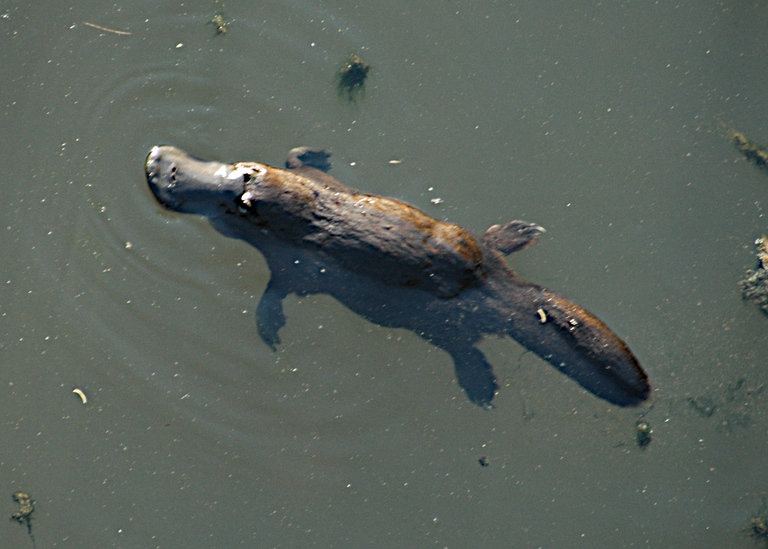
Credit: Peter Scheunis. Used under CC 1.0 license. The platypus as modified trigeminal nerve fibers that can pick up electric signals from prey.
After my granddaughter introduced me to this subject, I became fascinated by the intersection of technology, biology, and the environment. As I learned more, I thought it might be interesting to share the information with the Hive community. My one ethical concern (the little I know) is that bioelectronics might imply harvesting biological material from live animals. That development would be unacceptable.
I hope my readers find this exploration as intriguing as I do. Thank you for reading. Be well. Be peaceful, and as always,
Hive on!
Accents:
@muelli, from the LMAC Image Gallery

@agmoore, self made:

@yaziris, from the LMAC Image Gallery

Research Sources:
1https://www.sharkteamone.org/tiger-shark-information.html
2https://faunafocus.com/2020/02/23/tiger-shark-23/
3https://www.britannica.com/science/ampulla-of-Lorenzini
4https://ocean.si.edu/ocean-life/sharks-rays/sharks
5https://www.kxan.com/news/how-do-sharks-know-which-way-to-go-scientists-have-the-answer/
6https://www.science.org/doi/10.1126/sciadv.1600112
7https://www.sciencedirect.com/topics/chemistry/nafion-polymer
8https://www.researchgate.net/publication/275975174_Characterization_of_the_thermolysis_products_of_Nafion_membrane_A_potential_source_of_perfluorinated_compounds_in_the_environment
9https://www.nature.com/articles/srep09859
10https://www.epa.gov/sites/default/files/2016-01/documents/pfcs_action_plan1230_09.pdf
11https://www.cnbc.com/2022/12/06/aluminum-plants-in-the-us-are-releasing-tons-of-a-highly-potent-greenhouse-gas-unlike-their-counterparts-abroad.html
12https://onlinelibrary.wiley.com/doi/10.1002/app.50172
13https://legislature.vermont.gov/Documents/2022/WorkGroups/House%20Human%20Services/Bills/S.20/Witness%20Documents/S.20~Jen%20Duggan~Scientific%20Basis%20for%20Managing%20PFAS%20as%20a%20Chemical%20Class~4-7-2021.pdf
14https://par.nsf.gov/servlets/purl/10274343
15https://www.ncbi.nlm.nih.gov/pmc/articles/PMC6425839/
16https://www.nist.gov/system/files/documents/pml/div683/bioelectronics_report.pdf
17https://www.ncbi.nlm.nih.gov/pmc/articles/PMC5993099/
18https://www.ncbi.nlm.nih.gov/pmc/articles/PMC6746089/
19https://polsky.uchicago.edu/2022/08/30/stretchable-self-powered-bioelectronics-mimic-skin-in-form-and-function/
20https://thelivingplanet.com/wp-content/uploads/Stingray-Electroreception-Activity.pdf
21https://oceanconservancy.org/blog/2018/05/09/manta-ray-stingrays/
22https://inquiry.ucsc.edu/2017-18/electric-avenues/
23https://www.sciencedirect.com/topics/agricultural-and-biological-sciences/ampullae-of-lorenzini
24https://www.ncbi.nlm.nih.gov/pmc/articles/PMC6641634/
25https://www.cdc.gov/biomonitoring/pdf/pfcs_factsheet.pdf
26https://www.permapure.com/environmental-scientific/nafion-tubing/nafion-physical-and-chemical-properties/
27https://www.nafion.com/en/products/sulfonic-membranes
28https://www.researchgate.net/publication/265868148_Self-Assembling_Peptide_Hydrogels_Promote_in_vitro_Chondrogenesis_of_Bone_Marrow-Derived_Stromal_Cells_Effects_of_Peptide_Sequence_Cell_Donor_Age_and_Method_of_Growth_Factor_Delivery
29https://pme.uchicago.edu/faculty/sihong-wang
30https://www.sciencedirect.com/topics/engineering/molecular-engineering
31https://www.ncbi.nlm.nih.gov/pmc/articles/PMC6407855/
32https://www.dfw.state.or.us/fish/ohrc/docs/2011/Shark%20Senses.pdf
33https://onlinelibrary.wiley.com/doi/full/10.1111/brv.12804
34http://www.elasmo-research.org/education/white_shark/electroreception.htm
35.https://www.science.org/doi/10.1126/sciadv.abo5201
It's actually strange that animals evolved ways to do similar things to our technology but in an environmentally friendly way. It's not like there's evolutionary pressure for your tools to be good for the planet, cos by the time the pressure's on the planet's gone.
Hello dear @alexanderalexis,
It is strange that animals evolved in a more environmentally friendly way. I wonder if that intellect which supposedly separates us from other animals isn't kind of a self-destruct death virus. We evolve, but the more we evolve the closer we seem to get to extinction. Is that an evolutionary plan we can't see?
I don't know, but I'm really sorry you provoked to me to have this thought on an otherwise peaceful Sunday😆
Hope you are well, @alexanderalexis
People are afraid of sharks because Hollywood movies have instilled that fear, but do you know that cars cause more deaths per year? And I don't see that everyone is afraid of cars...
I'm afraid of cars😄
I think sharks are predators and should be respected as such. I don't worry about them much, but I certainly wouldn't go swimming in shark-infested waters.
Thanks for your comment. Always interesting.
The Ampullae of Lorenzini are amazing structures. We usually don't realize just how incredible nature is until we try to understand and recreate it in a lab. What I find intriguing is the possibility that these sensory systems allow an animal to sense the earth's magnetic field. Incredible.
They are amazing, aren't they? Apparently all animals, including insects have an electrical field around them. Just read about that in passing but I will read more.
Thanks for visiting, @litguru 😇
Thanks for your contribution to the STEMsocial community. Feel free to join us on discord to get to know the rest of us!
Please consider delegating to the @stemsocial account (85% of the curation rewards are returned).
Thanks for including @stemsocial as a beneficiary, which gives you stronger support.
Thank you Stemsocial. I appreciate the support.
if no one found this useful I think did. I have never heard of something like this in my life time here on earth. firstly my thanks goes to your granddaughter and secondly to you for sharing it with us here ❤️❤️☺️☺️
Thank you very much. I did thank her. She is in her first year of college and is sharing information with me. Isn't that wonderful?
I appreciate your visit and your comment,@miraclle
wow!!! first year and she got all this knowledge then she must be intelligent. I have been reading that article back to back
very interesting!! it is always good to observe nature and copy some survival mechanisms into a technology that can help us

!1UP
Thank you very much for the comment and the support !
You have received a 1UP from @gwajnberg!
@ccc-curator, @stem-curator, @vyb-curator, @pob-curator
And they will bring !PIZZA 🍕.
Learn more about our delegation service to earn daily rewards. Join the Cartel on Discord.
Thank you!
I gifted $PIZZA slices here:
@curation-cartel(3/20) tipped @agmoore (x1)
Send $PIZZA tips in Discord via tip.cc!
Sharks are really diverse and a genetically advanced species.
I remember when I watched about the in Nat Geo Wild.
Their way of thinking and the skills they have make them one of the greatest hunters ever.
The Ampullae of Lorenzini, is just one of they're hunting tools, although this was a very enlightening post🤗
Thanks @agmoore 😗
I'm sorry @seki1 that I missed this comment!! I don't know how I miss these things. It's so nice of you to stop by and read my post. They are magnificent hunters.
I hope you are having a wonderful day 🌻
It must happen when you're so popular 😂😂😂
No matter, thanks for replying back😂😂
Indeed they are great Hunters😀
Interesting post you share @agmoore. I had never heard of Lorenzini's ampoules before, it turns out to be a very interesting topic. I am very struck by the segment of the study that highlights how they pick up certain electromagnetic field signals, perhaps that is why some marine animals react in some way to large disturbances that we are not able to perceive naturally. I don't know much about marine life, but sharks have always seemed to me somewhat enigmatic organisms, maybe it is because I have read that they are among the oldest animals on the planet, so surviving so many things and for so many years makes me very curious, maybe these lorenzini ampoules are part of their success in surviving disasters and things like that.
Thank you for reading my blog @abneagro. I do find sharks fascinating. There is so much about the sea, about life on our planet that we don't know. Always surprising. It's why I enjoy your blogs so much. There is always information that is new to me.
Maybe the ability to detect electrical activity is a key to their success, one key. It would certainly be handy for humans if we had that abililty, wouldn't it? Imagine never getting lost again. I've loved maps all my life because I like to know exactly where I am. If I were a shark, wouldn't need a map, would I? :)
Warm regards,
AG